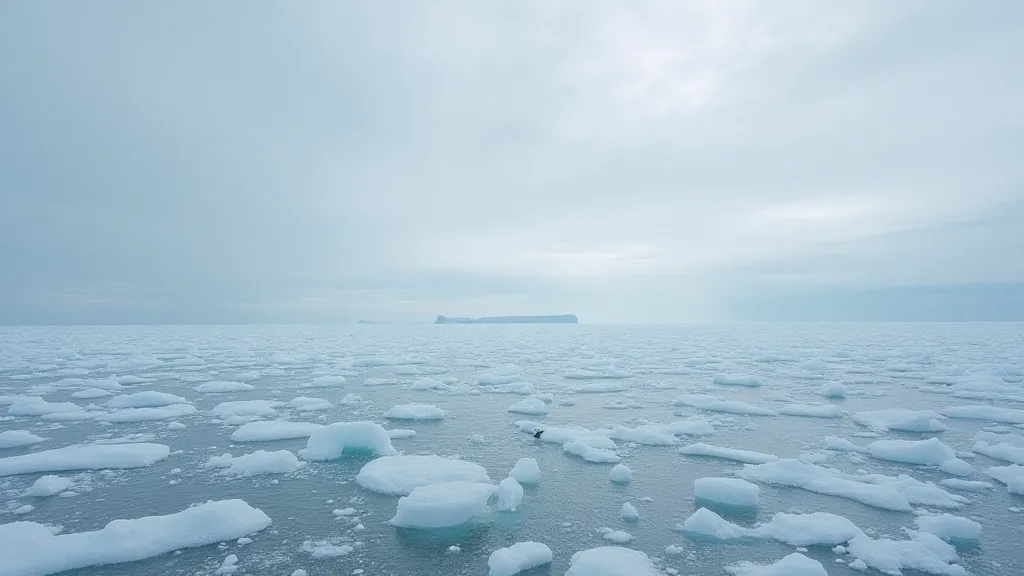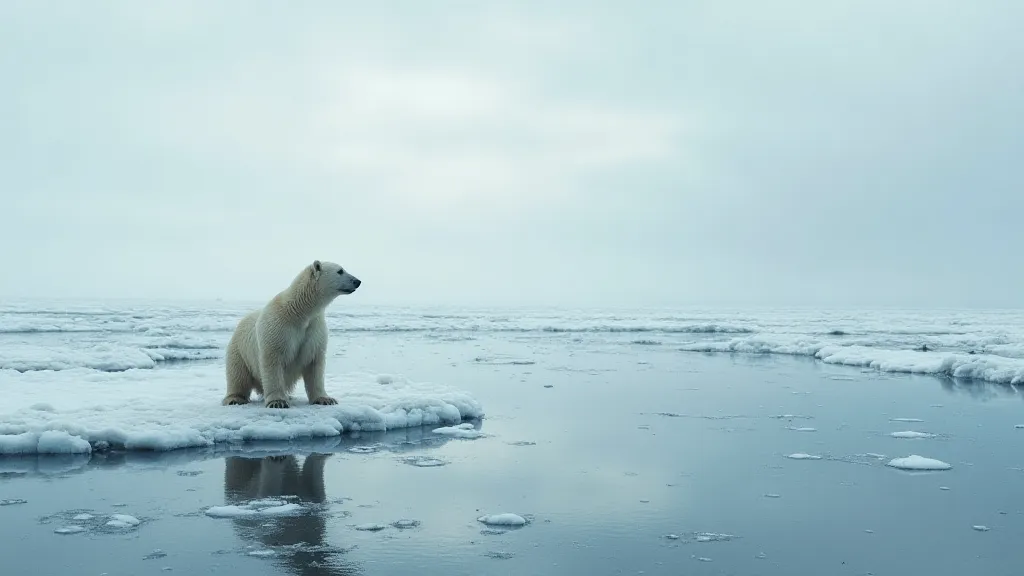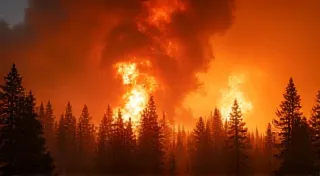The Role of Sea Ice in Past Climate Variability
The Earth's climate isn’s static; it's a dynamic system responding to a multitude of factors. While solar radiation and atmospheric composition often steal the spotlight, the role of sea ice – frozen ocean water – has been a crucial, yet often overlooked, player in past climate variability. Examining the historical extent and thickness of sea ice provides invaluable insights into past weather patterns and helps us understand the complexities of climate change. Understanding the interconnectedness of these factors is key, and sometimes, events beyond the typical climatic drivers can significantly impact our planet - for instance, volcanic activity can cause disruptions resembling the Year Without a Summer.
What is Sea Ice and Why Does it Matter?
Sea ice isn't just frozen seawater; it's a complex and vital component of the Earth’s climate system. It differs from icebergs (which are freshwater ice that has calved from glaciers) and its formation and melting are directly influenced by ocean temperatures. Sea ice plays a significant role in regulating global temperatures, influencing ocean currents, and impacting regional weather patterns.
The bright, reflective surface of sea ice, known as its albedo, reflects a considerable amount of incoming solar radiation back into space. This cooling effect is particularly important in the polar regions. Conversely, when sea ice melts, the darker ocean surface absorbs more solar energy, leading to further warming—a positive feedback loop that can accelerate climate change.
Furthermore, sea ice formation and melt significantly impact ocean salinity. When seawater freezes, salt is largely excluded, increasing the salinity of the surrounding water. This denser, saltier water can sink, driving deep ocean currents that redistribute heat around the globe. Changes in sea ice extent and thickness directly affect the strength and patterns of these currents.
Historical Sea Ice Extent and its Impact
Reconstructing past sea ice conditions is challenging, but scientists employ various proxy records to piece together the historical narrative. These include ice core data, sediment analysis from ocean floors, and even fossil records of marine organisms that thrive in specific sea ice environments. Historical data shows dramatic fluctuations in sea ice extent over millennia.
During colder periods, such as ice ages, sea ice extended significantly further from the poles, covering vast areas of the Arctic and Antarctic oceans. This extensive sea ice influenced atmospheric circulation, resulting in colder temperatures and altered precipitation patterns in lower latitudes. The impact of these changes even rippled into human history and mythology – as shown in Whispers from the Ice Age: How Paleoclimatology is Rewriting the Epic of Gilgamesh, ancient civilizations grappled with climate shifts related to periods of extensive ice cover.
Conversely, during warmer periods, like the Medieval Warm Period (roughly 950 to 1250 AD), sea ice retreated, leading to warmer temperatures and changes in regional weather. Understanding these shifts requires examining a range of climatic drivers - often, sudden and unexpected events are pivotal, like the impacts discussed in relation to the "Year Without a Summer."
The Little Ice Age (roughly 1300 to 1850 AD) witnessed a resurgence of sea ice, particularly in the Arctic, impacting fishing grounds, navigation, and even causing disruptions to agriculture in northern Europe. The consequences were far-reaching, affecting economies and leaving their mark on human narratives.
Analyzing the detailed fluctuations in sea ice extent allows us to better understand the drivers behind these historical climate shifts. Changes in solar activity, volcanic eruptions, and shifts in Earth's orbit have all been implicated in triggering changes in sea ice cover, which subsequently amplified their impact on global climate. Further complicating these shifts are local and regional events, sometimes less understood, which contribute to the bigger climate picture.
Sea Ice Today and Looking Ahead
Modern observations have documented a significant decline in Arctic sea ice extent since the late 20th century, largely attributed to human-induced climate change. This reduction in sea ice is not only a consequence of rising temperatures but also exacerbates the problem through the positive feedback loop mentioned earlier. As Arctic temperatures rise and sea ice retreats, more solar radiation is absorbed by the ocean, further accelerating warming. The implications extend beyond the polar regions, impacting weather patterns in mid-latitudes.
The consequences of this decline extend far beyond the Arctic. Changes in Arctic sea ice influence atmospheric circulation patterns, leading to more extreme weather events in mid-latitudes, such as heat waves, droughts, and heavy precipitation. The disruption of ocean currents can also impact marine ecosystems and global climate patterns. These shifts also echo through human history – it’s not hard to imagine how dramatic shifts in weather would leave their mark on societies, shaping narratives and influencing the arts. The impact of sudden, disruptive climate events has been well documented throughout history.
Furthermore, the changing climate is triggering feedback loops that can accelerate warming. As sea ice melts, the darker ocean surface absorbs more solar radiation, further warming the water and causing more ice to melt. This creates a vicious cycle that is difficult to break. Understanding these feedback loops is crucial for predicting future climate change and developing strategies to mitigate its impacts.
The intricate relationship between climate, weather, and societal well-being is undeniable. Periods of severe weather, such as those experienced during the Victorian era, have left a lasting mark on culture and literature. The “Great Smog” of Victorian England, for instance, serves as a potent reminder of the link between environmental degradation and human suffering, a narrative explored in The Rustling Echoes: How Victorian England’s ‘Great Smog’ Forged a New Literary Landscape.
Understanding the historical role of sea ice is crucial for predicting future climate change and developing strategies to mitigate its impacts. By studying past fluctuations in sea ice extent and thickness, we can gain a more complete picture of the complex interactions within the Earth’s climate system and better prepare for the challenges that lie ahead. Our planet’s history is a testament to the intricate and dynamic relationship between the environment and human civilization; recognizing the warning signs from the past is our best hope for a more sustainable future.

The legacy of past climate variability, heavily influenced by sea ice dynamics, underscores the interconnectedness of Earth's systems and the importance of continued research and responsible stewardship of our planet. Climate change isn't simply about rising temperatures and melting ice; it's about the profound implications for human societies, ecosystems, and the delicate balance of our planet.

Further analysis of ice core data, sediment records, and marine fossil assemblages will continue to refine our understanding of the profound influence sea ice has exerted on past climates and its ongoing role in shaping our planet's future. The complexity of these systems demands a multi-disciplinary approach, integrating data from various fields to paint a complete picture of Earth’s climate history and future trajectories.

The implications for biodiversity are also significant. Species adapted to specific sea ice environments are facing extinction as their habitats disappear. This highlights the urgent need for conservation efforts to protect these vulnerable species and ecosystems. The fate of the polar bear serves as a poignant reminder of the interconnectedness of all living things and the responsibility we have to safeguard the planet’s precious biodiversity. Ultimately, a sustainable future requires a profound shift in our relationship with the environment, recognizing that our well-being is inextricably linked to the health of the planet.





